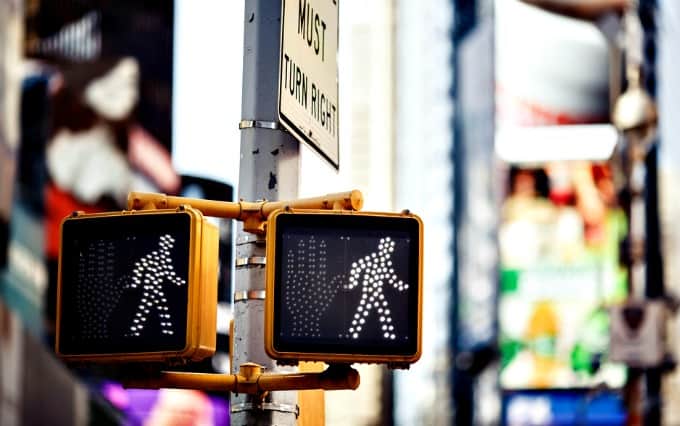Traffic Fatalities Up in 2015 After Years of Decline

Bucking a consistent trend of declines, the number of people killed in car crashes on U.S. roads jumped by a record 7.7 percent in 2015, according to the National Highway Traffic Safety Administration.
An estimated 35,200 people died in U.S. vehicle accidents in 2015, the NHTSA reported. That’s up from 32,675 in 2014 and the highest total since 2008, when 37,423 people were killed, although it’s still 19 percent below the 2005 level.
An increase in driving is part of the explanation for the rise in deaths. The upsurge in fatalities was particularly high among bicyclists and pedestrians. Federal officials are vowing to make roads safer.
What states had biggest increase in traffic fatalities?
Fatalities were up in every part of the country except for the region consisting of Louisiana, Mississippi, New Mexico, Oklahoma and Texas, where they dropped by 1 percent. The largest increase, 20 percent, was in the region comprising Idaho, Montana, Oregon and Washington.
Fatalities involving car crashes increased by an estimated 13 percent among bicyclists, 10 percent for pedestrians, 9 percent for motorcyclists, 7 percent for vehicle passengers and 6 percent for drivers.
In a statement about the new statistics, the Governors Highway Safety Association noted that, while improved vehicle safety has boosted the likelihood of occupants surviving a crash, “pedestrians and motorcyclists lack these same benefits and remain just as susceptible to serious injury or death in the event of a collision.”
Fatalities in crashes involving drivers from 15 to 20 years old rose by 10 percent — significantly above the overall increase. In contrast, fatalities involving large trucks and from rollover crashes were up by just 4 percent and 5 percent, respectively.

Why traffic deaths are on the rise
“It is concerning because the trend for a number of years was a decline in traffic fatalities, and now we’re seeing an increase,” says Russ Rader, senior vice president for communications at the Insurance Institute for Highway Safety. “However, it’s not unexpected.”
Traffic fatalities historically have been closely related to the state of the economy, Rader reports. When people are out of work or worried about money, deaths decline because people drive less.
With the economy improving and gas prices down, people are driving more — about 3.5 percent more miles in 2015 than in 2014.
That said, fatalities were still up by 3.7 percent when looking at the rate per 100 million miles traveled (the rate was down 23.3 percent from 2005). Part of the reason for this is that much of the driving that people give up during a recession, and take back up when the economy improves, is more dangerous highway travel, Rader says.
He adds that teens were driving much less during the recession, thanks to particularly high unemployment in their age group, and they’re the riskiest drivers on the road.

Has driving become safer?
Traffic fatalities have been declining in general in recent years thanks to safety technologies such as airbags, electronic stability control and, most recently, automatic collision-avoidance systems. In March, the Department of Transportation announced a deal with automakers requiring more than 99 percent of new vehicles to come with automatic emergency braking by 2022.
DOT says it’s also looking to require vehicle-to-vehicle communications systems on new vehicles, which it says could help drivers avoid or decrease the severity of 70 to 80 percent of vehicle crashes involving unimpaired drivers; and is working with researchers on technologies that could prevent drunk driving, which is responsible for nearly one-third of highway deaths.
CHECK OUT: Find the Cheapest Auto Rates in Your State
“Every American should be able to drive, ride or walk to their destination safely, every time,” U.S. Transportation Secretary Anthony Foxx said in the announcement of the 2015 data. “We are analyzing the data to determine what factors contributed to the increase in fatalities and at the same time, we are aggressively testing new safety technologies, new ways to improve driver behavior, and new ways to analyze the data we have, as we work with the entire road safety community to take this challenge head-on.”
The Governors Highway Traffic Safety Administration called the 2015 increase unacceptable and troubling. It said turning the tide would require a blend of enforcement, education and engineering solutions.
While vehicle safety has been increasing, many states have eliminated requirements for motorcyclists to wear helmets since 1995, when Congress repealed a provision penalizing states without such mandates.
“We should be encouraging states to have mandatory motorcycle helmet laws, which virtually all of them once did,” Rader says.
States should also more aggressively enforce laws against dangerous behaviors, such as impaired driving, speeding and running red lights, he adds.
“The message to policymakers is, even though the economy is a big part of this, they are not powerless.”